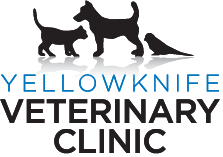Library
-
Miconazole topical is an antifungal used in the treatment of skin infections caused by yeast in cats and dogs. It may be used “off-label” or “extra label” for other conditions and in other animals. It may be specially compounded and/or combined into a formulation with other medications. Miconazole topical comes in a variety of forms.
-
Testing for microalbuminuria has some use in detecting early kidney disease but can also be an indicator of multiple other diseases. A positive test gives your veterinarian suspicion to carry out further testing; however, it can have false positives if not used properly. It is a simple test that can give you a jump on treating a condition to help your cat live a happier life for longer.
-
If microalbuminuria is detected, your veterinarian will likely recommend further testing to look for hidden disease. The choice of tests may vary but could include routine blood tests and urinalysis (see handouts “Complete Blood Count”, “Serum Biochemistry”, and “Urinalysis” for more information). If there is no evidence of underlying illness, then regular check-ups every 3-6 months, including microalbuminuria testing, may be recommended to monitor your dog’s health status and to watch for any changes.
-
The purpose of pet microchips is to provide permanent identification. Microchips are tiny, about the size of a grain of rice, and contain a unique identification number. They are inserted with a needle under the skin between the shoulder blades. A microchip reader detects the electronic code embedded in the chip and displays the identification number on its screen. The registration database is then checked for this identification number (either online or by telephone), and the pet owner's contact information is retrieved. A microchip is the most reliable way to reunite lost pets with their owners and may also be required for international travel.
-
The purpose of pet microchips is to provide permanent identification. Microchips are tiny, about the size of a grain of rice, and contain a unique identification number. They are inserted with a needle under the skin between the shoulder blades. A microchip reader detects the electronic code embedded in the chip and displays the identification number on its screen. The registration database is then checked for this identification number (either online or by telephone), and the pet owner's contact information is retrieved. A microchip is the most reliable way to reunite lost pets with their owners and may also be required for international travel.
-
Midazolam is a benzodiazepine used for its sedative, anti-anxiety, and muscle relaxant properties. It is primarily used as a sedative before surgery and to stop seizures. It is used “off label” or “extra label” in animals. This medication is a controlled substance primarily given via injection by your veterinary team, though it may be prescribed to your pet for intranasal or intrarectal administration at home.
-
Milbemycin otic (brand name MilbeMite® Otic solution) is an antiparasitic used in the treatment of ear mite infestations in cats and kittens four weeks of age or older. Milbemycin otic comes in liquid drop form (in pre-measured ampules).
-
Milbemycin oxime is a heartworm disease preventive and treats internal parasites in dogs and cats (e.g., hookworms and roundworms). It is also used off label to treat infestations in dogs. Milbemycin is given by mouth with a flavored oral tablet.
-
Milbemycin oxime + afoxolaner is a heartworm disease preventive that also treats certain internal parasites and controls fleas and ticks in dogs. It is also used off-label to treat mite infestations in dogs. This combination drug is given by mouth as a flavored chew tablet. Certain dog breeds are more sensitive to milbemycin oxime than others; your veterinarian will advise you on the safety of milbemycin oxime use in your dog. If you suspect an overdose or an adverse reaction to the medication, call your veterinary office immediately.
-
Milbemycin oxime + lufenuron is a heartworm disease preventive that also treats internal parasites (e.g., whipworms, hookworms, and roundworms) and controls flea populations in dogs. Milbemycin oxime + lufenuron is given by mouth as a flavored chew tablet. At prescribed doses, this medication is well-tolerated; when used off-label at higher doses for treating mites, side effects have been observed. Your veterinarian will advise you on the safety of milbemycin oxime + lufenuron use in your dog. If you suspect an overdose or an adverse reaction to the medication, call your veterinary office immediately.

